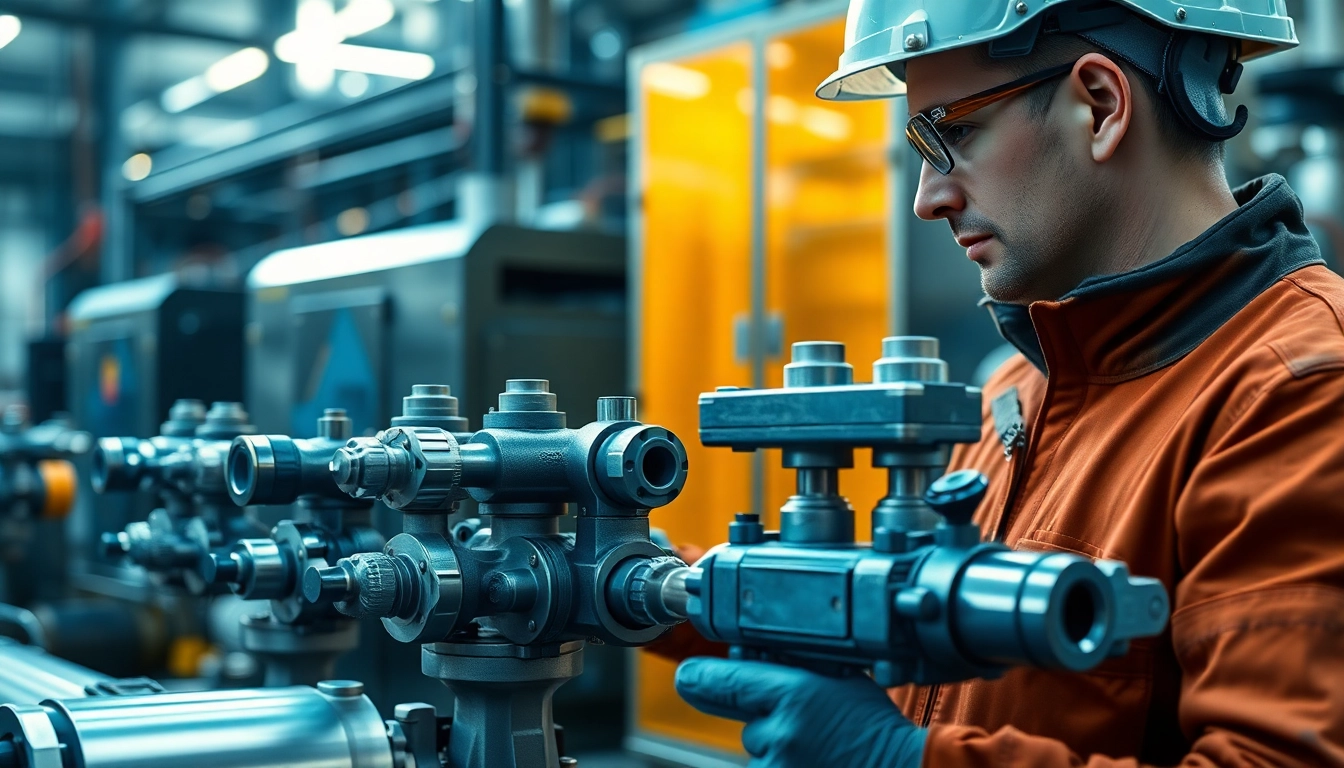Understanding the HM88 Series Manifold Valves
The HM88 Series Manifold Valves represent a significant advancement in the field of fluid control systems. Designed for precision applications, these valves enable seamless management of fluid flow in various industrial settings. Their utility extends across multiple sectors, including oil and gas, chemical processing, and water treatment, making them essential components in many operational infrastructures. For those looking to explore comprehensive insights into the capabilities and applications of the hm88 series, this article serves as an in-depth guide.
What is the HM88 Series?
The HM88 Series is a range of three-valve direct mount manifolds specifically engineered for differential pressure transmitter applications. These valves are notable for their efficient design, which integrates seamlessly with various instrumentation setups to ensure precise measurements and reliable performance. The HM88 models are manufactured using high-quality materials that withstand harsh industrial conditions, providing durability and longevity.
Key Features and Benefits of HM88
- Robust Construction: Built from corrosion-resistant materials, the HM88 valves can endure challenging environments.
- Compact Design: Their compact form allows for close-coupled installation, minimizing space requirements while enhancing operational efficiency.
- Versatility: These valves are suitable for a broad range of applications, enabling integration into various systems without the need for significant modifications.
- Enhanced Safety: The HM88 series incorporates safety features that prevent accidental leaks, ensuring the safety of both personnel and equipment.
- Ease of Maintenance: Designed with accessibility in mind, these valves facilitate straightforward maintenance, reducing downtime and operational costs.
Applications Across Industries
The HM88 Series finds applications in industries such as:
- Oil and Gas: Essential for monitoring pressure differentials in pipelines, enhancing safety, and efficiency.
- Chemical Processing: Used in the management of corrosive fluids, ensuring that measurement accuracy is maintained in demanding environments.
- Water Treatment: Critical for monitoring and controlling water flow, thus playing a vital role in ensuring safe drinking water supply.
Installation Guidelines for HM88 Manifold Valves
Preparing for Installation
Before initiating the installation of HM88 valves, it is crucial to conduct a thorough site assessment. This includes checking compatibility with existing systems, cleaning installation surfaces, and ensuring that all necessary tools are available. Correct preparation helps to avoid common pitfalls during installation.
Step-by-Step Installation Process
- Review Specifications: Consult the manufacturer’s specifications to ensure compliance.
- Connect the Valves: Align the valves with the mounting points and secure them using appropriate fasteners.
- Install Process Connections: Carefully connect the process lines to the valve ports, ensuring leak-free joints.
- Pressure Testing: Before operational use, conduct pressure tests to confirm that there are no leaks and that the system is operational.
Common Installation Challenges and Solutions
During installation, common issues may arise, such as misalignment or improper sealing. One effective solution for ensuring alignment is using alignment tools to guide the installation process. For sealing issues, using high-quality sealants or gaskets can provide a robust solution.
Maintenance Best Practices for HM88 Valves
Routine Maintenance Tasks
Routine maintenance is essential to ensure the longevity and reliability of HM88 valves. Key tasks include regular inspections, cleaning of valve components, and the replacement of worn parts. Establishing a maintenance schedule can help in preemptively identifying issues before they escalate.
Identifying and Troubleshooting Common Issues
Common issues such as leaks or unexpected pressure drops can often occur. If leaks are detected, it is advisable to inspect the connections and seals for integrity. Pressure fluctuations may require checking the operation of the valves and ensuring they are not obstructed.
Scheduling and Documenting Maintenance
Keeping detailed records of maintenance activities is crucial. Documenting when inspections and repairs were conducted aids in tracking performance and identifying potential patterns over time, which can inform future maintenance strategies.
Performance Metrics and Quality Assurance
Key Performance Indicators for HM88
Key performance indicators (KPIs) for the HM88 valves include leak rates, pressure stability, and installation ease. Monitoring these metrics helps ensure that the valves operate within acceptable limits and maintain compliance with industry standards.
Testing Standards and Compliance
The HM88 series must adhere to rigorous testing standards to ensure reliability and safety. Compliance with standards such as ISO and ANSI ensures that these valves not only meet operational specifications but also align with safety regulations common in various industries.
Real-World Case Studies and Success Stories
Numerous industries have successfully implemented the HM88 series to enhance their operations. For instance, a notable oil and gas company reported a 20% reduction in leak incidents after upgrading to HM88 valves, highlighting their effectiveness in improving system reliability.
Future Trends in Manifold Valve Technology
Innovations Shaping the HM88 Series
As technology continues to evolve, the HM88 series is also undergoing advancements. Innovations such as smart valve technologies that incorporate IoT for real-time monitoring and diagnostics are poised to enhance performance capabilities further.
Predictions for 2025 and Beyond
By 2025, it is anticipated that the demand for manifold valves like the HM88 series will increase substantially. Industries are expected to favor solutions that provide not only efficiency but also enhanced safety features, thus propelling manufacturers to innovate rapidly.
Industry Insights from Experts
Industry experts emphasize that the future of manifold valves will increasingly focus on integrating advanced technologies such as automation and data analytics to optimize performance and maintenance practices. Continuous engagement with users and understanding their needs will be crucial for manufacturers to stay ahead in the market.

